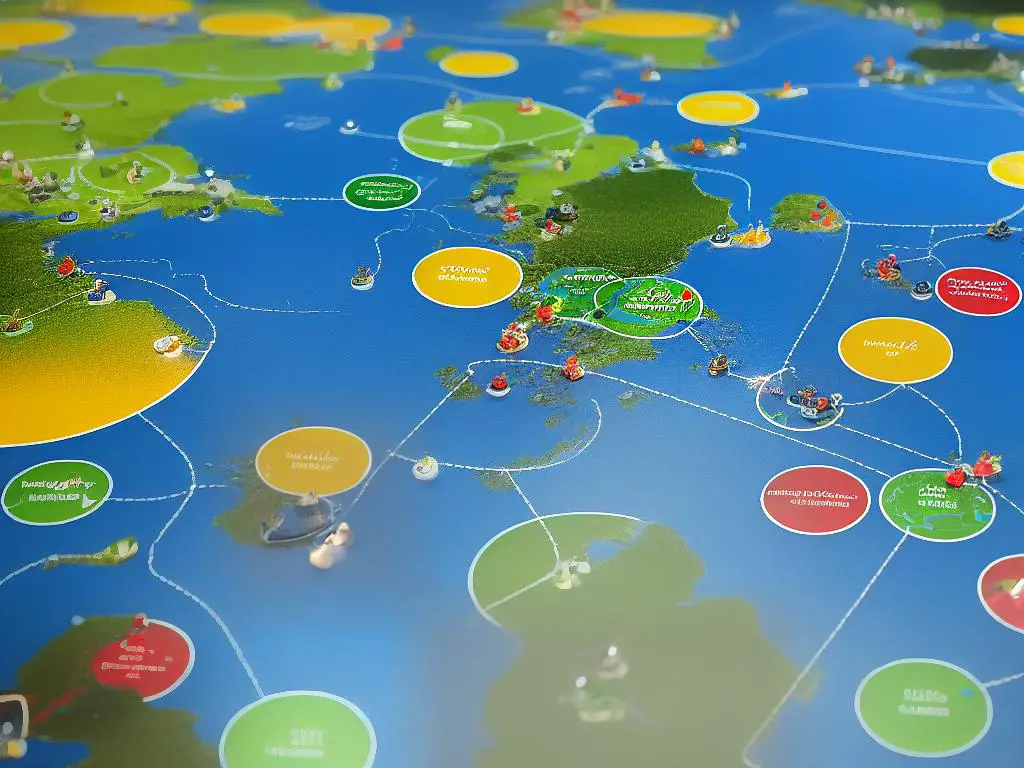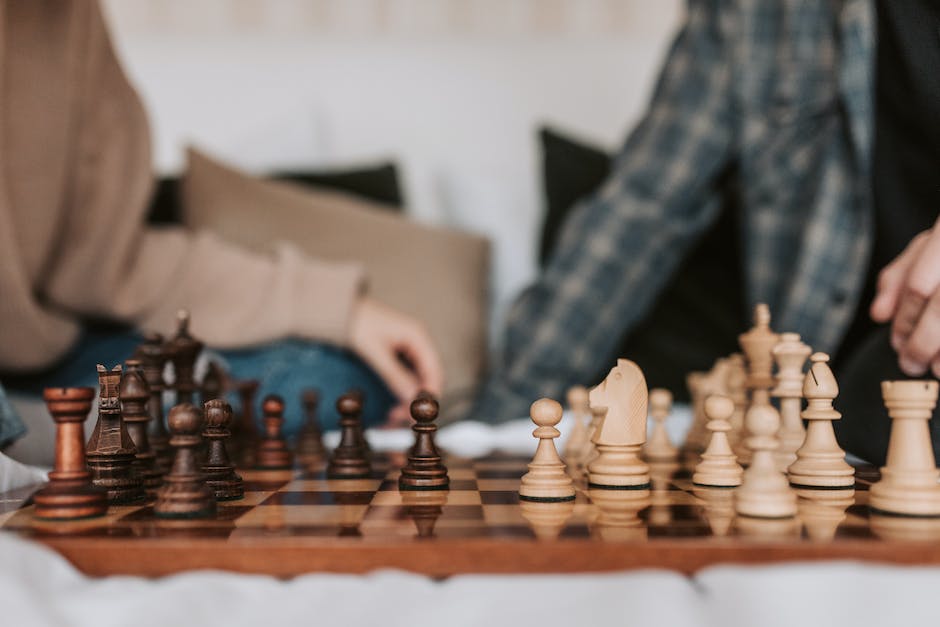In the midst of global health crises, it’s no surprise that the board game Pandemic has become a popular form of entertainment. Through its unique blend of strategy and teamwork, it offers not only an engaging challenge, but also a somewhat ironic method of escapism. This article aims to provide aspiring Pandemic champions with insightful guidance into understanding game mechanics, developing strategies and tactics, as well as fostering effective teamwork and communication. Just like a real-world pandemic, succeeding in this game requires a thorough understanding of how diseases spread, and a coordinated global effort to curb the outbreak.
This article contains affiliate links. I will earn a small commission at no extra cost to you if you purchase a product through them!
Understanding Game Mechanics
Understanding the Essentials: Roles, Actions and Finesse in Pandemic
In order to increase your chances of winning the game Pandemic, it is imperative to have substantial knowledge about the game’s mechanics. This understanding begins with knowing the roles, possible actions and the event cards of the game.
Distinguishing Your Role: Hero of Your Own Narrative
Each player in the game of Pandemic takes on the role of a member from a crack team of disease-fighting specialists. The game includes seven roles– Dispatcher, Medic, Scientist, Researcher, Operations Expert, Contingency Planner, and Quarantine Specialist. Each of these roles has a unique special ability that can massively impact your strategy, so understanding the strengths and limitations of your chosen role is essential.
Mastering Your Actions
Each turn, a player can take up to four actions. These actions include:
- Travel: You can move your pawn from one city to another using various methods like Driving and Flying.
- Build a Research Station: You can choose to build a research station on your current city.
- Treat Disease: You may opt to treat the disease in your current city, decreasing the disease cubes present.
- Share Knowledge: You can share the city card that matches the city you are in with another player.
- Discover a Cure: If you have five city cards of the same color, you can discover a cure for that disease.
Utilizing Event Cards strategically
Event cards are special, one-time-use cards that can be played at any point during a player’s turn. They can be the difference between victory and defeat, hence known when to use each is crucial. For example, government grant cards allow you to place a research station in any city for free, while one quiet night allows you to skip the next infect cities step.
The Mechanism of the Spread of Diseases and Outbreaks
In Pandemic, diseases spread through the draw of infection cards, adding more disease cubes to the city’s drawn. When a city receives more than three of the same color disease cube, an outbreak happens, spreading the disease to all connected cities. Understanding this mechanism and predicting where outbreaks may occur is vital so preventive action can be taken.
Grasping these precise mechanisms is absolutely essential for winning at Pandemic. Just remember, it’s all about working together and finding the right balance between controlling the diseases and finding cures. Good luck saving the world!

Developing Strategies and Tactics
Conquering Pandemic – A team game of strategy
Pandemic, an award-winning board game, revolves around teamwork, strategic planning, and a bit of luck. To win the game, players must tackle the challenge of four diseases that are spreading across the globe. Knowing how to use each player’s special abilities strategically, efficiently using cards and balancing between curing diseases and preventing outbreaks are crucial to save the world. Here’s how you can develop effective tactics and strategies to conquer Pandemic.
Understanding Character Strengths: The Key to Victory
Each role in Pandemic comes with a unique ability that could be the difference between losing and catching that last disease just in time. It’s essential to understand and leverage each character’s strengths to your team’s advantage:
- Dispatcher: Use his ability to move other players’ pawns as if they are their own to get team members where they need to be.
- Medic: This role shines in treating diseases and helping to control the board. Their ability to remove all cubes of a particular color in one city can be game-changing.
- Scientist: Requires only four (not five) cards of a particular color to discover a cure. Use this to your advantage for rapid curing.
- Operations Expert: Can build a research center without needing to discard a city card. Proper use of this character can lead to quick disease cures.
Efficient Card Usage: Turning the Game in your Favor
While most of the game is about moving around the board and responding to the spread of diseases, you shouldn’t underestimate the power of your cards.
- Event Cards: The immediate resource that can sway the game in your direction. Use “One Quiet Night” to skip the next Infect Cities step, or “Forecast” to rearrange the top six cards of the infection deck. A timely “Airlift” can get a player where they need to be instantly.
- City Cards: These are critical for curing diseases, and the power of flying to any city can’t be understated. Use them carefully, especially if you leverage “Charter Flights” (fly to any city by discarding that city’s card) or “Direct Flights” (discard a city card to move directly to the city named on the card).
Balancing Curing and Preventing Diseases
It’s crucial to keep a balance between curing diseases and preventing outbreaks. Here are some tips:
- Try to focus on curing diseases over simply managing them unless you’re faced with an imminent outbreak.
- If possible, try to clean up diseases where you can to prevent outbreaks, but curing should be a priority.
- Prioritize diseases based on their spread, the deck’s discard pile, and the potential for outbreaks.
Formulating Your Route: Optimizing Movement
Part of winning Pandemic is determining the most efficient route:
- Try to minimize your movements. If it’s possible to clean up more than one city in a turn, do so.
- Use charter and direct flights effectively. However, remember that city cards are also needed to cure diseases.
- Use your dispatcher to move other players around the board quickly, saving actions on each turn.
Developing strategies and learning how to win at Pandemic is much like the game itself, a combination of planning and adapting. As you continue to play, remember that the key values of this game are teamwork and communication. As a united group, you hold the best chance of saving humanity.

Teamwork and Communication
Understanding the Importance of Teamwork and Communication
In any team-based environment, communication and cooperation are key. The board game Pandemic is no exception. As a competitive game where players work together against the encroaching threat of global disease, a high level of coordination and communication is necessary for victory.
The Role of Clear Communication
Clear communication is crucial to a successful game of Pandemic. Each player has their own set of cards and a distinct role, but effectively mobilizing these resources requires communication.
Firstly, it’s essential to communicate your plans with your team. If you are planning on traveling to a certain city to eradicate a disease, let your teammates know. Others might have actions or cards that can make your plan more effective.
Secondly, be transparent about the content of your hand. The more your team knows about the resources available to them, the better. Sharing which city cards you have can enable more efficient travel, treatment, and cures.
The Power of Teamwork
Teamwork is critical in Pandemic due to the unique abilities of each role. Roles like the Scientist, Medic, or Dispatcher each have their own strengths that, when combined effectively, can be powerful tools in stopping the spread of the diseases.
It’s important to work together towards a common goal. For instance, if you focus on treating diseases while your teammates focus on curing them, you can maximize the number of actions taken and make a significant impact on the game.
By effectively collaborating and coordinating your actions, your team can efficiently prevent outbreaks and keep the spread of disease under control.
Unified Vision and Strategy
Establishing a unified strategy is the secret ingredient to a successful game. Play to your strengths and have a shared understanding of which diseases to prioritize or which areas to focus on. Define your big-picture strategy at the beginning of the game and continuously revise it as circumstances change.
Final Note
Remember, Pandemic is a game of efficient resource management, but it’s also a game about communication. Without open, clear communication, your team will find it much harder to win. So, speak up, share your cards and intentions, and collaborate strategically for a successful game.

As our narrative on Pandemic wraps up, it’s apparent that winning at this board game involves more than just luck and individual brilliance. Whether it’s optimizing card usage, leveraging character strengths, or striking a delicate balance between curing diseases and preventing outbreaks, every aspect of strategy becomes crucial. However, the final and perhaps the most important piece of the puzzle lies in successful teamwork and communication. After all, in both the game and real-life pandemics, it is the collective efforts and shared victory of humanity that truly counts. Remember, in Pandemic, either everyone wins… or everyone loses.
For more Pandemic fun, check out Pandemic Legacy!
